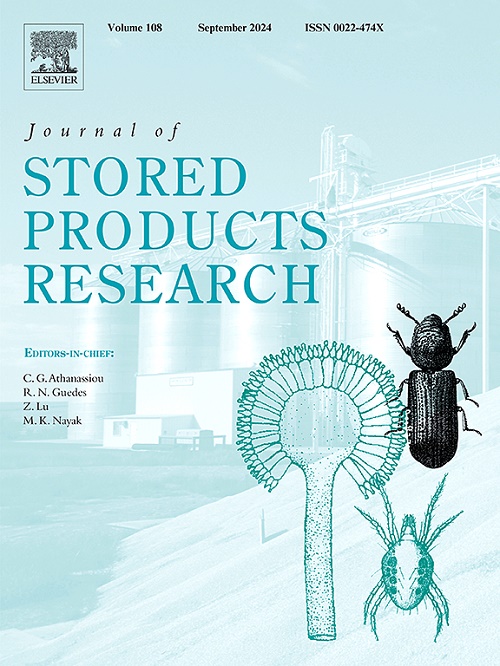Bioactive composition, microstructure, and physicochemical properties of Arbutus unedo berries dried using different techniques
IF 2.7
2区 农林科学
Q1 ENTOMOLOGY
引用次数: 0
Abstract
This research examined the impact of infrared (IR) and convective drying (CV) at varying temperatures (40, 60, and 80 °C) and freeze-drying (FD) on the microstructure, drying kinetics, and quality attributes of strawberry tree fruit (Arbutus unedo L.), including phenolic content (TPC), flavonoids (TFC), anthocyanins (TA), antioxidant activity, color, rehydration ratio, shrinkage, and bulk density. Results showed that elevated temperatures accelerated the drying process, with IR at 80 °C reducing the duration by 69% compared to CV. IR drying was particularly effective in preserving the fruit's red color, achieving the lowest ΔE values (8 ± 4.59) and showing minimal color change at 80 °C. While drying generally increased TFC and TPC, the impact on antioxidant activity was negligible, except in IR drying at 60 °C. However, TA was largely reduced, mainly due to prolonged processing times. SEM analysis highlighted that FD samples maintained a more open structure, while IR samples showed desirable microstructure preservation, leading to improved moisture retention. The Midilli model best described the drying process of the strawberry tree berries, with diffusivity ranging from 0.96 to 7.07 ( × 10−10 m2/s) for CV and 0.42 to 2.57 ( × 10−9 m2/s) for IR. Activation energies were calculated as 45.72 kJ/mol for CV and 41.91 kJ/mol for IR. Overall, the study suggests that IR at 80 °C is the most efficient method for drying Arbutus unedo, based on its effectiveness in drying time reduction, preservation of color, anthocyanins, microstructural integrity, and minimizing shrinkage, while maximizing the rehydration ratio compared to CV.
求助全文
约1分钟内获得全文
求助全文
来源期刊
CiteScore
5.70
自引率
18.50%
发文量
112
审稿时长
45 days
期刊介绍:
The Journal of Stored Products Research provides an international medium for the publication of both reviews and original results from laboratory and field studies on the preservation and safety of stored products, notably food stocks, covering storage-related problems from the producer through the supply chain to the consumer. Stored products are characterised by having relatively low moisture content and include raw and semi-processed foods, animal feedstuffs, and a range of other durable items, including materials such as clothing or museum artefacts.

 求助内容:
求助内容: 应助结果提醒方式:
应助结果提醒方式:


